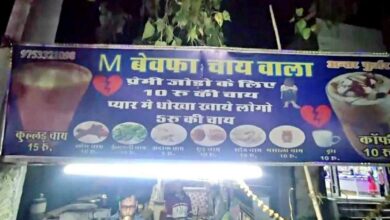don’t politicize the population

The issue of population in India is very sensitive. On one hand there is communal division and on the other hand the caste division is also very deep. Because of this, every time the population figure gives rise to a special kind of discourse in India. That’s when, on the occasion of World Population Day, the United Nations’ Population Division released the figure that India would become the world’s most populous country next year, in the same way politics started on it. Uttar Pradesh Chief Minister Yogi Adityanath said, ‘If the rate of increase of population of one section does not increase, then anarchy will spread’. Uttar Pradesh is the state with the largest population and also the state that sends the largest number of MPs to the Lok Sabha. If the apprehension is created about the population in that state that the population of a section is increasing and it can lead to anarchy, then the psychology behind it can be understood. Keep in mind that the draft population control law has been prepared in Uttar Pradesh and the chairman of the State Law Commission submitted this draft to the government in August last year.
An objective analysis of the report of the United Nations will reveal many such things, which cut off the discourse being built after that report. For example, if India is becoming the world’s most populous country four years before the deadline of 2027, then it is not because the population is increasing rapidly in India, but it is happening because of a child in China. Due to the policy, the population rate became negative and there the population did not increase in the proportion that was estimated. The reality is that India has done a wonderful job in population control. When the first population policy was made in India and population control efforts started, the Total Fertility Rate (TFR) in India was 6 per cent and today after seven decades it is 2 per cent. According to United Nations standards, if a woman gives birth to 2.1 children, that is, the TFR of a country becomes 2.1 percent, then the population there becomes stable. In India it is 2 per cent, which means that the rate of population growth in India has stopped.
Sadly, many kinds of lies have been spread about the increase in population in India. An assumption has been made that the population of Muslims is increasing rapidly. To support this notion, false and true figures have been created, through which it is told that by a certain year, Hindus will become a minority in India. It is true that in some districts the population structure has changed and in many districts the Muslim population has become a majority. It is also true that in many Muslim-majority districts, efforts have been made to implement Sharia rules and regulations. Recently, such reports came from two districts of Jharkhand. But these are exceptional incidents, which are being shown like this is happening all over the country. On the contrary, the Muslim population in the whole country is also being controlled rapidly. The rate of growth of Muslim population in India i.e. TFR was 4.4 percent in 1992-93, which increased to 2.3 in 2019-20. That is, the Muslim population has also reached the TFR of stabilization.
Then there is no need to fabricate lies or create misconceptions or do politics about population figures. Instead, considering this huge population as an asset, there is a need to plan for its better use. Every fifth person of working age in the world lives in India. But sadly, most people of working age do not have work. Jobs in the organized sector are negligible and the unorganized sector is also dying due to demonetisation, GST and Corona. People have certainly made arrangements to run their lives in the name of self-employment, but that is not enough. Half of the country’s population i.e. a large part of women is out of the workforce. There are no working conditions for them in most of the sectors. In India, only 30 percent of women of working age, ie above 15 years of age, are involved in some work or the other. Most of these too are associated with family farming or business. As the level of education and health is improving and women are leaving behind the sole responsibility of childbearing, the need for better employment arrangements is being felt for them. Instead of enacting a law to control the population, there is a need to make such policies, which ensure respectable employment for the vast population of the country. Even if any law for population control is made in the country, it should contain necessary measures regarding the post-control situations. For example, attention should be paid to the health, education and employment of women, as well as the system of living with respect to the elderly should also be considered. By the end of this century, 30 percent of the country’s population will be above 65 years of age.
However, law makers should focus on improving infrastructure to convert the country’s vast population into a resource. The most basic need is affordable and good education system. If everyone gets good and affordable education, then only any concrete initiative can be taken to convert the burden of population into resource. Apart from education, nutrition and better medical system are equally important. Malnourished and sick population cannot contribute to the development of any country. Lastly, there is the provision of employment. The Central Government of India and the State Governments should make such policies for all those sectors from agriculture to manufacturing, which create maximum employment opportunities. Many countries of the world have shown the way in this matter. India’s neighbor Bangladesh has become the world’s top country in garment exports, so it has been able to do so only by skill development of its large population. India can achieve such a feat in many sectors. But that will happen only when politics on population is stopped and policies are made for its positive use.






